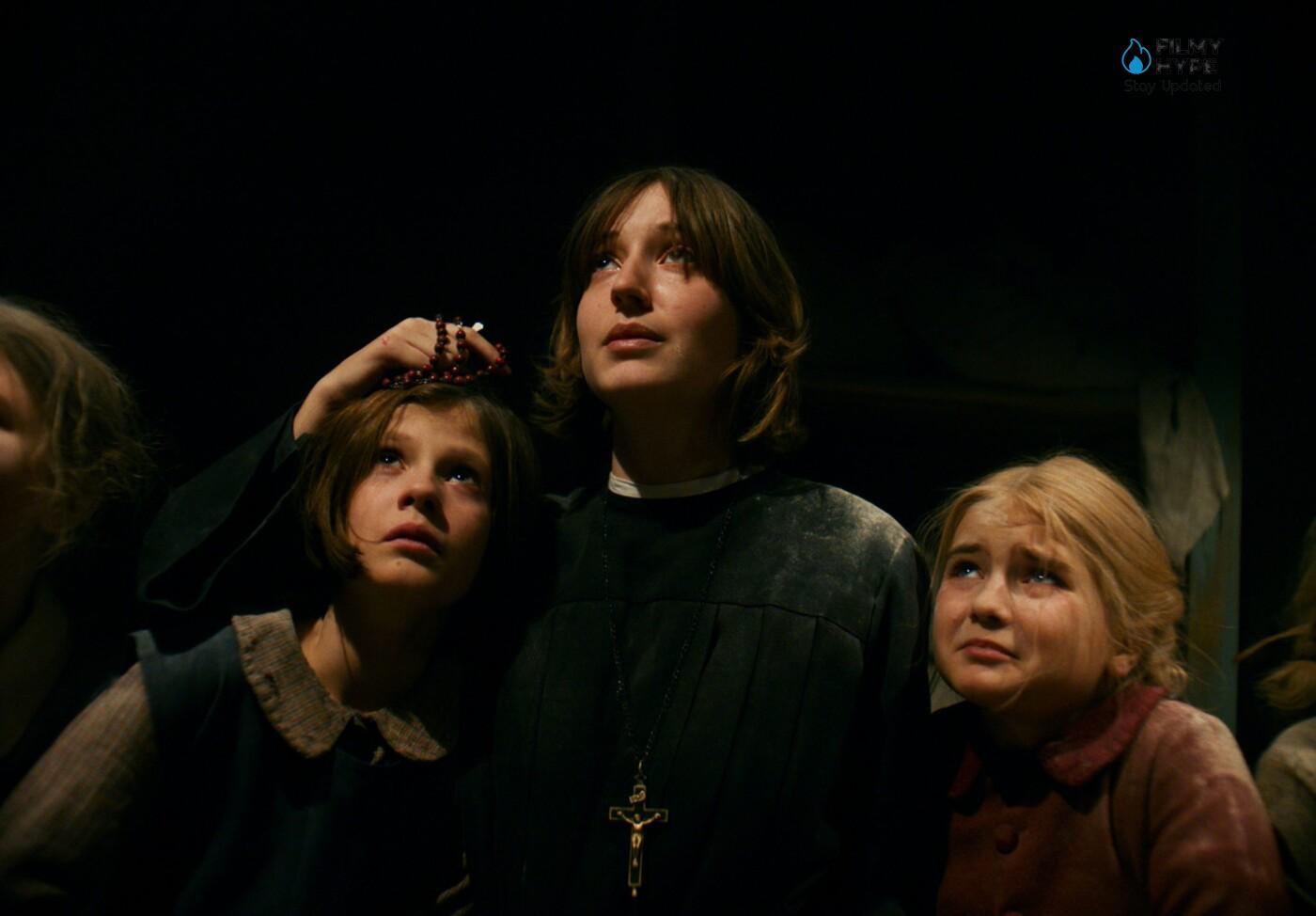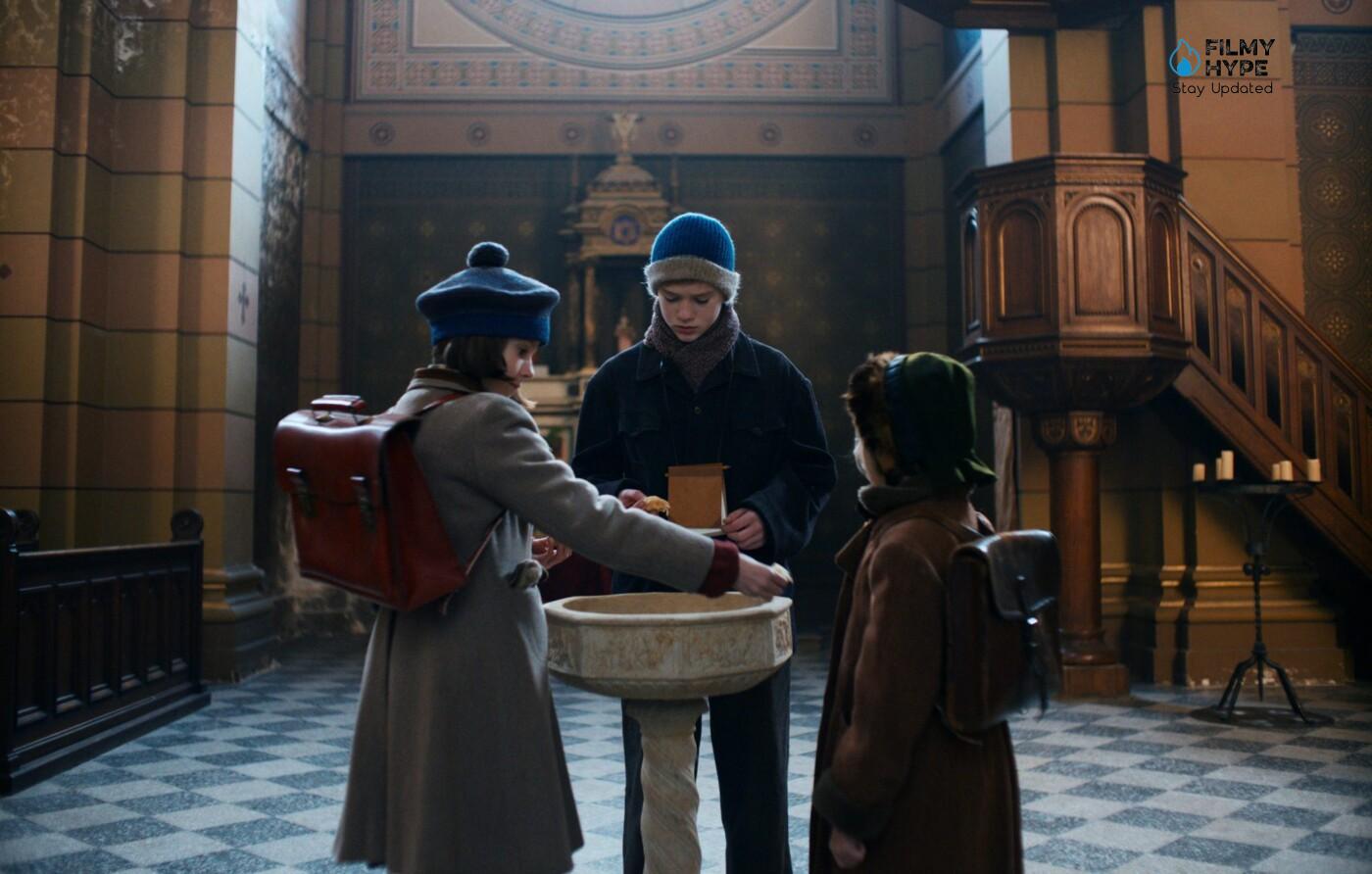The Shadow in My Eye: The Dramatic True Story That Inspired The Netflix Film
Ole Bornedal's touching reconstruction of Operation Carthage is on Netflix: the allied attack on the Gestapo headquarters in Copenhagen in March 1945 and its collateral damage, a forgotten tragedy.
Awarded the Robert Awards (Danish Oscars) for Best Special Effects, The Shadow in My Eye is available for streaming on Netflix from March 9. The touching war drama by Ole Bornedal (the director of 1864 and The Night Watchman) reconstructs one of the most painful collective tragedies experienced in Denmark: the catastrophic bombing of Shellhus, the Gestapo headquarters in central Copenhagen, and its incalculable collateral damage.

Produced by Jonas Allen and Peter Bose of Miso Film, The Shadow in My Eyes brings to the screens a story little known in the rest of Europe, but a still open and bleeding wound in the memory of the Danes. The facts at the center of the film, told from the perspective of three children (Henry, Eva and Rigmor, played by Bertram Bisgaard, Ella Josephine Lund Nilsson and Ester Birch Beck) and their families (including Mads Riisom and Danica Curcic, the Detective Naia Thulin of The Chestnut Man), a nun (Fanny Bornedal, the director’s daughter) and a Hilfspolizei agent (Alex Høgh Andersen), date back to the morning of 21 March 1945 , during the final stages of the Second world War.
The “side effects” of the war are the civilians who suffer firsthand the devastating consequences of the bombing. They are the “tragic mistake” as a result of which nothing will ever be the same again. In the history of Denmark that scar still hurts, even after almost eighty years. In the Scandinavian country, invaded by Germany in April 1940, resistance to Nazism is spontaneous and nonviolent. King Christian X and the Social Democratic government, which remained in office in a “compromise” regime, oppose the racial laws and encourage all forms of civil non-cooperation. The introduction of martial law in August 1943 to stifle a wave of strikes and sabotage gives rise to real resistance, known as “Holger Danske Modstandsgruppe“.
When the “hunt for the Jew” is now open, activists, aided by solidarity organizations, clergymen, policemen and ordinary citizens, hide and finance the escape to neutral Sweden of over seven thousand Jews wanted by the SS. With the complicity of Werner Best, a young Reich plenipotentiary in Copenhagen and Himmler’s trusted man, Denmark avoids the final solution.
The Shadow in My Eye: True Story Operation Carthage
The Danish partisans take up arms only in the last year of the conflict. The “ Modstandsgruppe” network contacts the allies to ask for direct intervention from the Royal Air Force in a crucial mission: to free the partisans locked up and tortured in Shellhus , a building in central Copenhagen that has become the Gestapo headquarters . The operation is delicate: it is difficult to bomb a target surrounded by buildings where thousands of civilians live.
The RAF initially refuses to take part in the mission because it considers it too dangerous, then accepts the risk by planning a low-level intensive bombing plan. The raid is attended by the de Havilland DH.98 Mosquitoes of the RAF, the RAAF (the Australian Air Force) and the RNZAF, the New Zealand Air Force.

Shellhus is on the corner of Nyropsgade and Kampmandsgade. In addition to being a prison for anti-Nazis, it contains an extensive archive with essential information on the movement’s names, groups and actions. On the top floor, the Germans settled 26 partisans using them as a human shield. The British pilots – in the film Peter (Alban Lendorf) and Andy (James Tarpey) – decide to proceed anyway: the goal is “to sacrifice a few to save many”.
There is a strong wind that morning. During the raid, a plane hits a lamppost and crashes into the Institut Jeanne d’Arc, a French school located at 74 Frederiksberg Allé. At that time there are over 430 children and more than 30 Catholic nuns in the institute. Second and third wave fighters are misled by smoke and flames: The bombers believe the Shellhus is under the column seen from the skies and mistakenly hit Den Franske Skole and nearby apartment buildings. 125 people die, including 86 children, 102 injured, including 67 children.
In Shellhus, bombed according to plan, nearly 100 Gestapo employees are killed and the archive is destroyed. 9 Allied pilots and 8 Danish resistance fighters also lose their lives, while another 18 manage to escape. About 900 people are left homeless as a result of the bombing. In the hours immediately following the raid, something unusual and extraordinary happens: the nuns and people rushed to the scene, the Danish auxiliary police, the collaborators of the Hilfspolizei and the remaining German soldiers all participate together in the rescue operations.
After the war, the remains of the school are demolished and the surviving pupils are transferred to the Institut Sankt Joseph. Today the area houses six buildings and a monument, the work of Max Andersen inaugurated in 1953 in memory of the victims. For years, however, the disaster of the Institut Jeanne d’Arc was ” erased from memory “.
The Shadow in My Eye: A Forgotten Massacre
As reporter Anita Brask Rasmussen reveals in Information the images of the bombings, taken by two Mosquitoes specially sent by the RAF to document the operation with small cameras mounted on the wings, do not appear in period documentaries. In the aftermath of the liberation, the pro-Atlantic government (Denmark is one of the founding members of NATO) demands and obtains that all documentary makers tell the “politically more favorable” version of the occupation.
Few are able to mount without ministerial interference. Civilian victims of Franske Skole and Søndre Boulevard disappear from official footage. Historian Lars-Martin Sørensen speaks bluntly of ” falsification of history ” and of “a gross sin of omission” to hide “an unsuccessful bombing “. Sørensen compares Operation Carthage to what happened in more recent times in Iraq. The authorities “want to create the idea that well-planned airstrikes can be carried out with such clinical precision that they target only what is necessary, but this is nonsense.”

Several documents show that Danish government ministries and upper echelons want to pass the British attack on the Gestapo as a resounding success. It is no coincidence that in famous documentaries on the resistance and liberation of Denmark such as Det gælder din frihed from 1946 and De fem år from 1955, only the footage of the attack on Shellhus is used. The only reference to the French school shaved off the role is described as ” an unfortunate accident “.
Even today, despite the recovery of sources, testimonies and materials, the bombing of the Institut Jeanne d’Arc remains unknown to most, as if it were a removed page of the Second World War. The Shadow in My Eyes recalls the stories of some of these victims “erased” from memory through the eyes of children, “with the sense of wonder with which they observe a grotesque world around them”, said Bornedal. This “is the story of innocence against machines, of all the children victims of the horrors of chance”.



